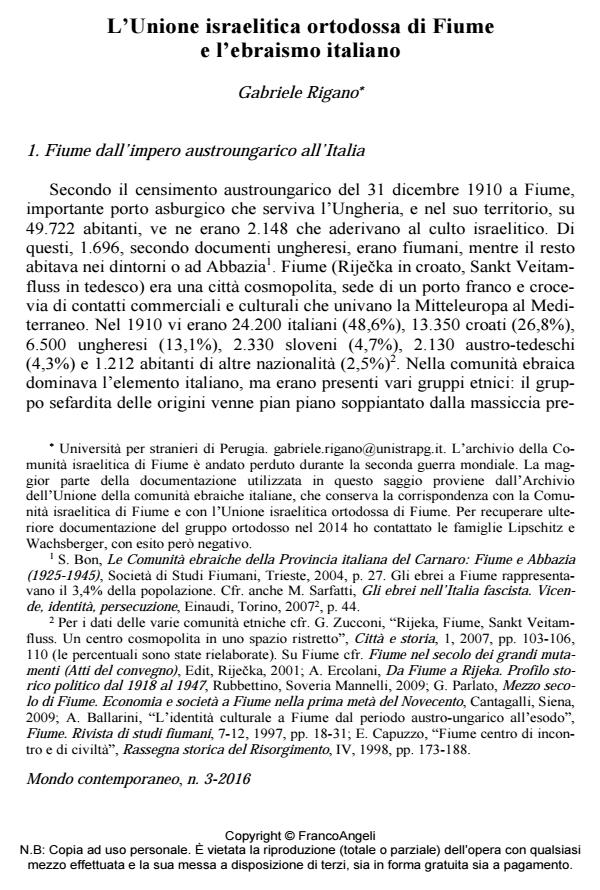The Jewish Orthodox Union of Rijeka and Italian Judaism
Journal title MONDO CONTEMPORANEO
Author/s Gabriele Rigano
Publishing Year 2017 Issue 2016/3
Language Italian Pages 39 P. 53-91 File size 320 KB
DOI 10.3280/MON2016-003002
DOI is like a bar code for intellectual property: to have more infomation
click here
Below, you can see the article first page
If you want to buy this article in PDF format, you can do it, following the instructions to buy download credits

FrancoAngeli is member of Publishers International Linking Association, Inc (PILA), a not-for-profit association which run the CrossRef service enabling links to and from online scholarly content.
The article focuses on the history of the Jewish orthodox group of Rijeka, the only one in Italy to be given an institutional structure. The Orthodox of Rijeka were inclined not to recognize the institutions of the Jewish Community in the city because they considered them as having been reformed, although these institu-tions simply followed the Italian rite. The author focuses on the reactions of Ital-ian Jewry to the demands for autonomy of the orthodox group and highlights the different conceptions of Jewish life underlying the positions expressed by the two groups. Throughout the first half of the 20th century they harshly confronted each other on two opposite options: the unitary one and the autonomist one. The unify-ing principle is a constant in Italian Judaism, who was reluctant to recognize con-fessional diversification: orthodoxy and reform have never found a place in the Italian Judaism. The experience of orthodox Jews in Rijeka, however, cannot be fully understood by merely comparing different religious views. A key factor is rep-resented by so-called ethno-communal relations, where the religious dimension is one factor among others (ethnic-national, cultural, family ones) to identify the mi-nority group.
Keywords: Rijeka, Italian Judaism, orthodox Jews, Jewish community of Rijeka, Jewish Orthodox Union of Rijeka, Judaism and Fascism
Gabriele Rigano, L’Unione israelitica ortodossa di Fiume e l’ebraismo italiano in "MONDO CONTEMPORANEO" 3/2016, pp 53-91, DOI: 10.3280/MON2016-003002